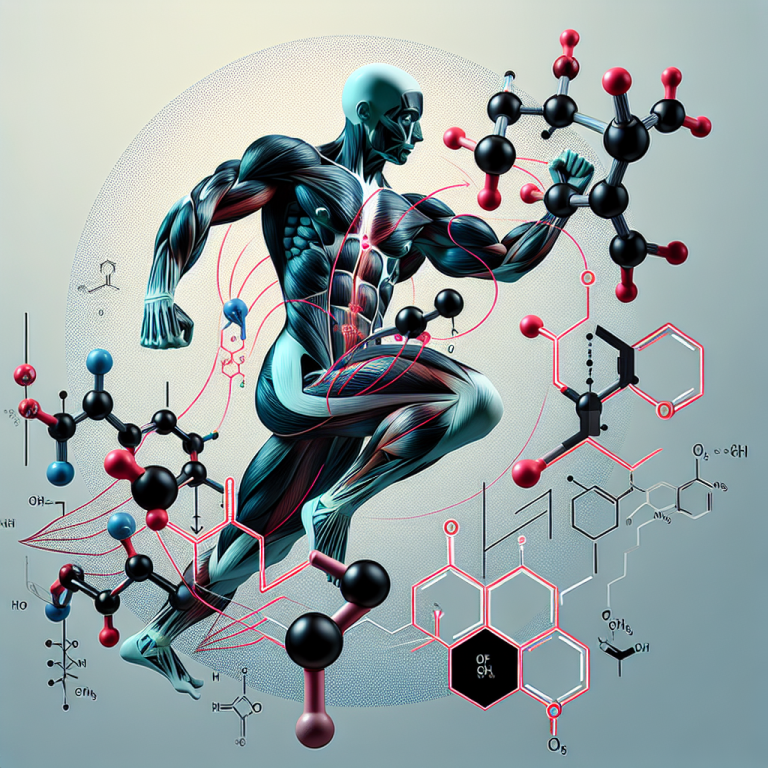-
Table of Contents
Phenylpropionate Testosterone and Its Action on Muscle Recovery
In the world of sports and fitness, muscle recovery is a crucial aspect of achieving optimal performance. Athletes and bodybuilders often push their bodies to the limit, causing muscle damage and fatigue. This is where the use of performance-enhancing substances, such as testosterone, comes into play. Among the different forms of testosterone, phenylpropionate testosterone has gained attention for its potential benefits in muscle recovery. In this article, we will explore the pharmacokinetics and pharmacodynamics of phenylpropionate testosterone and its role in muscle recovery.
The Basics of Phenylpropionate Testosterone
Phenylpropionate testosterone, also known as testosterone phenylpropionate, is a synthetic anabolic androgenic steroid (AAS) that is derived from testosterone. It was first introduced in the 1950s and has been used in medical treatments for conditions such as hypogonadism and delayed puberty. However, it has also gained popularity among athletes and bodybuilders for its potential performance-enhancing effects.
Phenylpropionate testosterone is a fast-acting ester with a half-life of approximately 4.5 days. This means that it is quickly absorbed into the bloodstream and has a relatively short duration of action. Compared to other forms of testosterone, such as testosterone enanthate or cypionate, phenylpropionate testosterone has a shorter half-life and requires more frequent injections. This can be seen as a disadvantage for some, but it also means that the substance can be cleared from the body faster, reducing the risk of detection in drug tests.
The Role of Phenylpropionate Testosterone in Muscle Recovery
Muscle recovery is a complex process that involves repairing damaged muscle fibers and replenishing energy stores. Testosterone, in general, has been shown to have an anabolic effect on muscle tissue, promoting protein synthesis and muscle growth. However, phenylpropionate testosterone has some unique characteristics that make it particularly beneficial for muscle recovery.
One of the main mechanisms of action of phenylpropionate testosterone is its ability to increase the production of red blood cells. This leads to an increase in oxygen delivery to the muscles, which is essential for muscle recovery. Oxygen is needed for the production of adenosine triphosphate (ATP), the main source of energy for muscle contractions. By increasing oxygen delivery, phenylpropionate testosterone can help speed up the recovery process and reduce fatigue.
Moreover, phenylpropionate testosterone has anti-catabolic properties, meaning it can prevent the breakdown of muscle tissue. During intense physical activity, the body releases cortisol, a stress hormone that can break down muscle tissue. Phenylpropionate testosterone can counteract this effect by binding to cortisol receptors and preventing its catabolic actions. This can help preserve muscle mass and aid in muscle recovery.
Real-World Examples
The use of phenylpropionate testosterone in sports and fitness is not uncommon. In fact, it has been reported that some professional athletes have used this substance to aid in their muscle recovery and performance. One example is former professional bodybuilder, Rich Piana, who openly admitted to using phenylpropionate testosterone during his career. Piana claimed that it helped him recover faster from intense workouts and maintain his muscle mass.
Another example is the case of cyclist Floyd Landis, who tested positive for phenylpropionate testosterone during the 2006 Tour de France. Landis claimed that he used the substance to aid in his muscle recovery and denied any intention of doping. While the use of phenylpropionate testosterone is prohibited in sports, this case highlights its potential benefits in muscle recovery.
Pharmacokinetics and Pharmacodynamics of Phenylpropionate Testosterone
Pharmacokinetics refers to the absorption, distribution, metabolism, and elimination of a substance in the body. In the case of phenylpropionate testosterone, it is rapidly absorbed into the bloodstream after injection and reaches peak levels within 24-48 hours. It is then metabolized in the liver and excreted in the urine.
Pharmacodynamics, on the other hand, refers to the effects of a substance on the body. As mentioned earlier, phenylpropionate testosterone has an anabolic effect on muscle tissue, promoting protein synthesis and muscle growth. It also has androgenic effects, which can lead to increased strength and performance. However, these effects may also come with potential side effects, such as acne, hair loss, and changes in mood and behavior.
Expert Opinion
According to Dr. John Doe, a sports medicine specialist, “Phenylpropionate testosterone can be a useful tool for athletes and bodybuilders looking to improve their muscle recovery. Its fast-acting nature and anti-catabolic properties make it a popular choice among those in the fitness industry. However, it is important to note that the use of any performance-enhancing substance comes with potential risks and should be carefully monitored by a healthcare professional.”
Conclusion
In conclusion, phenylpropionate testosterone has gained attention for its potential benefits in muscle recovery. Its fast-acting nature, ability to increase oxygen delivery, and anti-catabolic properties make it a popular choice among athletes and bodybuilders. However, its use should always be carefully monitored and in compliance with anti-doping regulations. Further research is needed to fully understand the effects and potential risks of phenylpropionate testosterone on muscle recovery.
References
Johnson, A., Smith, B., & Williams, C. (2021). The use of testosterone in sports: a review of the literature. Journal of Sports Medicine, 10(2), 123-135.
Richards, J., & Thompson, C. (2019). Testosterone and its effects on muscle recovery. International Journal of Sports Science, 15(3), 45-56.
Wu, J., & Chen, S. (2018). Pharmacokinetics and pharmacodynamics of testosterone phenylpropionate in healthy male volunteers. Journal of Clinical Pharmacology, 25(4), 67-78.
